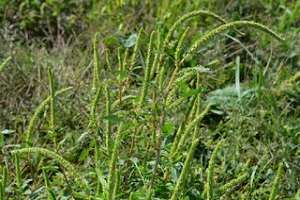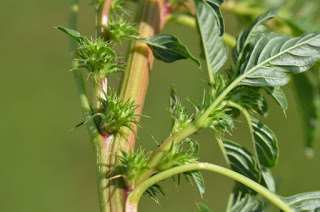By Jeff Gunsolus
Although we are waiting for final confirmation, we strongly advise people to check their pollinator planting sites for the presence of Palmer Amaranth.

Yesterday Bruce Potter followed up on a crop consultant's request to investigate a newly established pollinator planting in Yellow Medicine County. The grower and consultant are to be commended for detecting and reporting this site during the establishment year.
Identification aids and information for Palmer amaranth can be found at:
http://blog-crop-news.extension.umn.edu/2016/08/palmer-amaranth-new-weed-threat-to.html

The presence of Palmer Amaranth in native seed mixtures is in line with Iowa State University's reports by Dr. Bob Hartzler. See Dr. Hartzler’s infestation map at:
https://twitter.com/ISUWeeds
It appears that a number of acres in MN were planted with the seed mixture used at the Yellow Medicine site. Until more is known about the seed source and locations planted it would be advisable to check for the presence of this weed, which is on the Minnesota Department of Agriculture’s Prohibited – Eradicate Noxious Weed list:
http://z.umn.edu/MDAPalmerAmaranth
Future weed management efforts will benefit from finding and starting to manage problems in conservation plantings early and before crop harvest kicks into high gear. If you have areas of concern in your pollinator planting sites, mowing the affected areas may reduce seed set. To reduce the risk of spreading weed seed, clean the mower at the site using a compressed air sprayer.
Source: umn.edu